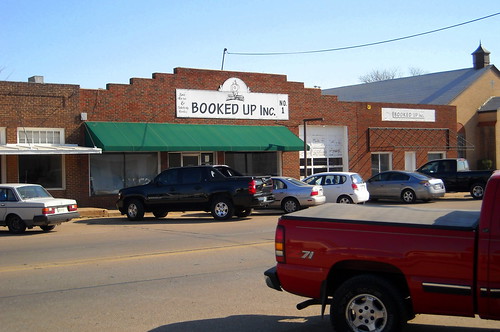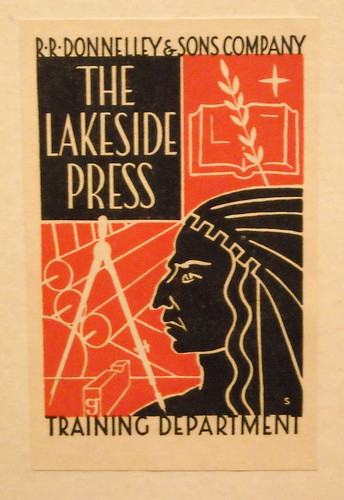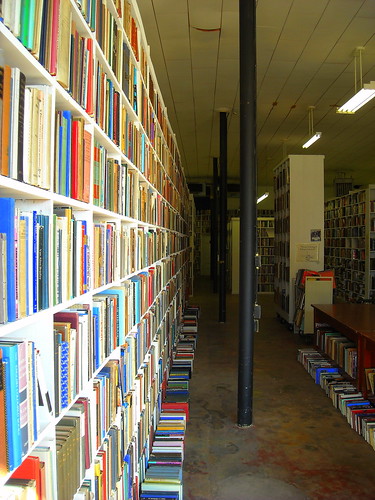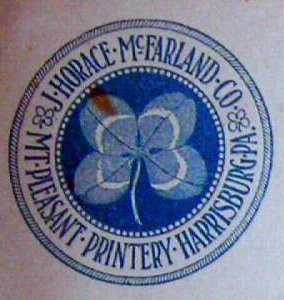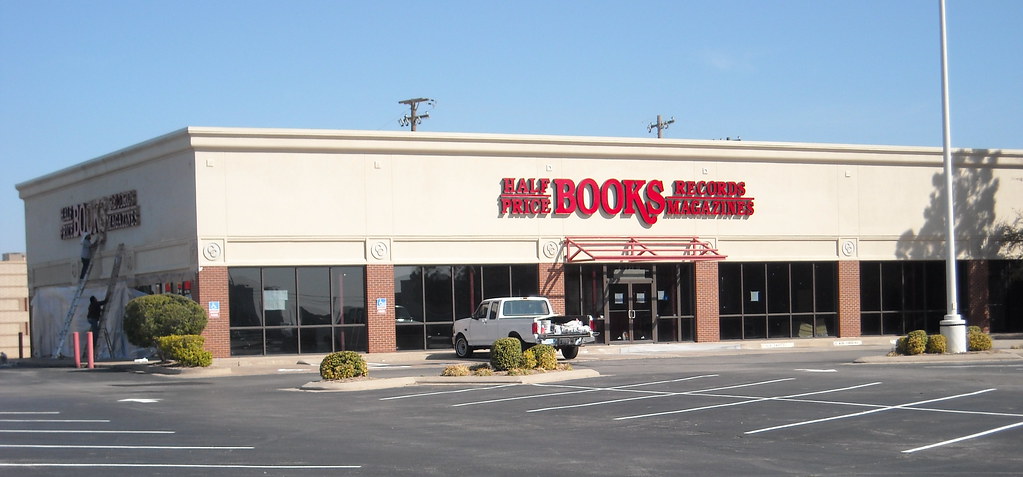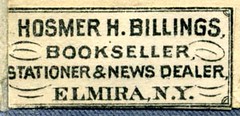Below is my latest post on the
Fine Books & Collections blog. Sorry about phoning this one in here. PS, I did get my neato postcard in the mail today for the booksale at UCO in Edmond, April 17-19. I'll post more on that soon.

One area I collect in is books about books. A part of that collection includes book trade labels. What is a book trade label? If you've handled old books, you've likely noticed teeny-tiny labels typically on the front or rear endpaper. They will often be less than an inch long and a half inch tall.
I'm not really sure why, but it seems more natural to refer to these tiny bits of paper as tickets when associated with a bookbinder, and a label when it is from a bookseller. Perhaps because craftsmen use jobbing tickets and retailers label their merchandise. In the interest of casting my net wide, I refer to them all as book trade labels. That was the nomenclature used when I found
Seven Roads Book Trade Labels and realized I was not the only one interested in these gems. Unfortunately, Seven Roads went dormant in June 2007. However lost Seven Roads is, we gained the
Bibliophemera blog, which often features labels.
Book trade labels were used by booksellers, bookbinders, and can be a wealth of history and fun. Labels, historically, were available from commercial label printers. However, some specially made labels could set a bookseller apart from others near by. This 1891 advertisement from James Clegg in London gives just a few examples of common types. I'm currently working on a "field guide" to book trade labels and advertisements like Clegg's are golden discoveries. Some booksellers today use custom return address labels, which are certainly effective, but can be ho-hum. I've not seen any contemporary "bibliomorphic" labels like this one from Oklahoma City
Last week I received a new label for my collection from Scott J. Coutts at
Solidus bookbindery in Melbourne, Australia. Scott is honestly the first active bookbinder I've met who has decided to use a label to identify his work. Deciding to use one, he went all out to make it memorable. He used the image by woodcut artist Jost Amman of bookbinders at work in the 1568 work A True Description of All Trades.
Scott, a microbiologist working at Monash University in Melbourne, Australia, decided to take up bookbinding about a year and half ago.
Exile Bibliophile: What drew you into bookbinding?
Scott: I've always loved good books, particularly photography books. Also, I'm often annoyed at how badly constructed modern books are! I like old things and things that have a certain 'charm' and sentimental value, things that are quite tactile - especially books, which I collect. So I guess the love of well-made books, my annoyance with badly made books attracted me to
binding . It's a creative outlet.
Exile: What spurred your decision to create your own label?
S: I've always liked ex libris and book trade labels. Since I started making my own books, I thought it was reasonable that I should have my own! Primarily, I like the look of them. As you can tell, my labels contain no contact information so, for better or worse, they're not really designed for
advertising or increasing sales (maybe they should be!)
Exile: I think they're memorable enough! Could you describe the process you used to create your label? Are they letterpress printed?
S: The actual labels are not printed traditionally, only because I don't have the means. The label was prepared digitally and printed with an inkjet printer. I didn't use coated paper on purpose - In this instance, I like the small amount of bleed that occurs. The paper is Van Gelder Zonen 120gsm laid paper, which is one of my favourites! After printing several to a sheet, they were torn down using a '
deckled edge tearer ' to produce the irregular edges. Finally, the edges were boned flat and smooth, ready for use.
Exile: I really like the deckled edge effect, and was impressed with your method. I've never seen a label featuring a deckled edge. I have some perforated labels, but nothing like this. Thank you for the beautiful label for my collection. I'm sure it will stand out for a very long time!



